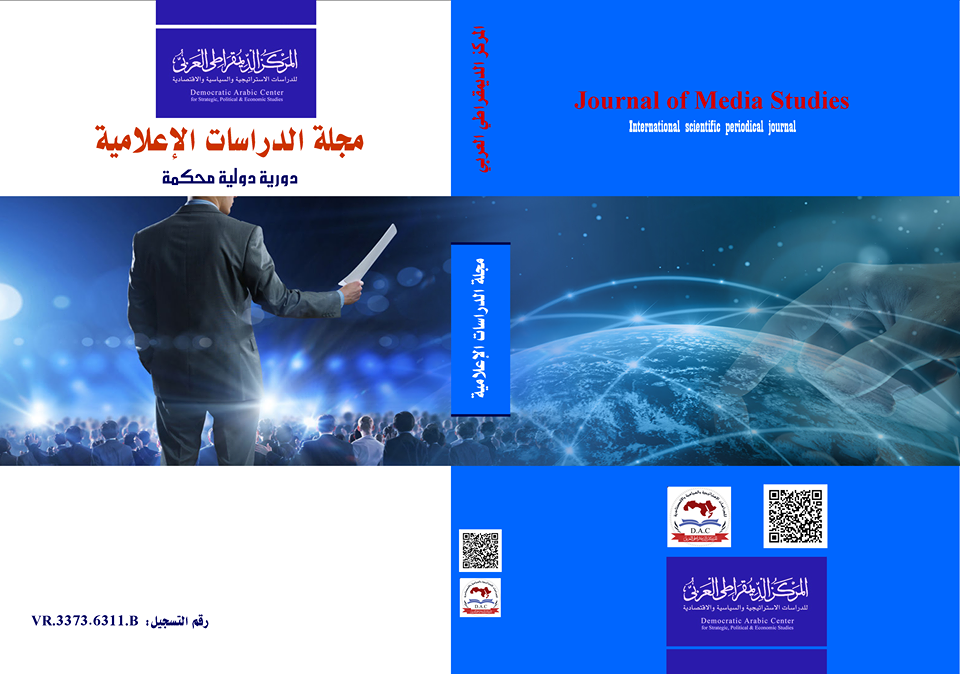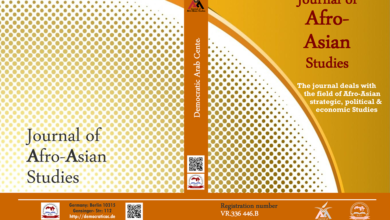تحولات الهجرة في منطقة البحر الأبيض المتوسط حالة المغرب نموذجا
Migration changes in the Mediterranean Region The case of Morocco is a model

تأليف : د. يـوسـف كريــم
نسخة “pdf”-
تحولات الهجرة في منطقة البحر الأبيض المتوسط حالة المغرب نموذجا
الطبعة الأولى “2021″ –من كتاب: – تحولات الهجرة في منطقة البحر الأبيض المتوسط حالة المغرب نموذجا
جميع حقوق الطبع محفوظة #المركز_الديمقراطي_العربي ولا يسمح بإعادة إصدار هذا الكتاب أو اي جزء منه أو تخزينه في نطاق إستعادة المعلومات أو نقله بأي شكل من الأشكال، دون إذن مسبق خطي من الناشر .
تقديم:
تتناول هذه الدراسة أحد المجلات البحثية التي عرفت في العقود الاخيرة توسعا في العلوم الاجتماعية، ألا وهو موضوع الهجرة، وتهدف هذه الدراسة بالدرجة الأولى إلى رصد ومواكبة مختلف التحولات البنيوية التي عرفتها وتعرفها الهجرة عموما على مستوى ضفتي البحر الأبيض المتوسط. فعلى مستوى الضفة الشمالية، انتقلت الهجرة من قضية اقتصادية واجتماعية عندما كانت أوربا بحاجة إلى سواعد لإعادة بناء ما دمرته الحرب وتجاوز مخلفاتها، إلى قضية أمنية تحتم على دول الاتحاد الاوربي تبني استراتيجيات ومبادرات أمنية شاملة وموسعة من أجل احتوائها ومحاصرتها، الأمر الذي أسهم في تنامي تدفقاتها غير الشرعية وارتفاع مآسيها الإنسانية. وعلى مستوى الضفة الجنوبية، فقد تحولت العديد من دول جنوب البحر الابيض المتوسط ،بغض النظر عن مستوى تنميتها، من دول مصدرة للهجرة إلى دول استقبال وعبور كما هو الحال بالنسبة للمغرب الذي أصبح بدوره أرضا للجوء والاستقرار الدائم للمهاجرين، رغم ان الوعي الجماعي لم يستوعب بعد هذا المعطى.
إن هذه التحولات لا يمكن فصلها عن التطورات الدولية والإقليمية المتميزة بالتعقيد والتركيب، خصوصا بعد نهاية الحرب الباردة وتغير ملامح النظام الدولي، فتغير مضمون العديد من المفاهيم السائدة في العلاقات الدولية بفعل التغير في طبيعة وبنية التهديدات، جعلت المقاربة الجديدة لقضايا الأمن الأوروبي ترتكز على ضرورة تحديد طبيعة التهديدات والأخطار عبر الوطنية القادمة من الضفة الجنوبية والتي أضحت تشكل تحديا لأمن المجتمعات السياسية الحديثة.
وقد انعكست هذه التحولات البنيوية لتي عرفتها الهجرة خلال العقود الاخيرة على الرأسمال الرمزي والرصيد الثقافي والحضاري لمنطقة حوض البحر الأبيض المتوسط،. فالمتوسط الذي كان الفضاء التاريخي لعلاقات التبادل و المنافسات و النزاعات بين الحضارات المتجاورة، بدأ يفقد هذا الرأسمال الرمزي، وبدا ، مع أمننة الهجرة في الاستراتيجيات الأوروبية، أن توصيف “فرنان بروديل”(Fernand Braudel) له كمجال ديناميكي حلت محله توصيفات أخرى، حيث اعتبره البعض بأنه مصدر تهديد، أو بحر غير مستقر، أو “مقبرة البشر”.
نظريا، من أجل التمكن من تحليل فرضيات الدراسة، تم الاشتغال على الموضوع بوحي من النظريات الأمنية من أجل الفهم الجيد لسياسات الهجرة في منطقة البحر الأبيض المتوسط،، والتي تسعى بلدان الضفة الشمالية إلى التحكم في موجاتها القادمة من ضفته الجنوبية، ذلك أن مفهوم الأمن في الظروف الدولية المعاصرة لم يعد محصورا في البعد الداخلي بمفهوم حماية أمن الأفراد والمجتمع أو الخارجي بمفهوم حماية الحدود، بل أصبح يتسع ليشمل المحيط الجيوسياسي للمجموعات الإقليمية والدولية، وهو ما يلاحظ في قضية أمننة الهجرة في أوروبا.
منهجيا، ونظرا لطبيعة الموضوع الذي يزاوج-كما قلنا- بين عدة زوايا تاريخية اقتصادية، استراتيجية- سياسية وقانونية، فإن دراسة هذا البحث تفرض توظيف نوع من التكامل المنهجي الذي يقوم على استعمال أكثر من منهج واحد لمحاولة الاقتراب من الإشكالية محل الدراسة.
Changements migratoires dans la région méditerranéenne – Le cas du Maroc est un modèle
RESUMÉ
La Méditerranée représente une zone géographique où la mobilité des hommes reste très forte: Fernand Braudel la considérait comme « un espace-mouvement ».
Dans le contexte de la mondialisation des flux migratoires, la Méditerranée est l’un des principaux espaces migratoires au monde. Mais, elle est l’un des espaces les plus fermés en matière de contrôle des frontières, puisqu’elle constitue la limite externe de l’Europe, au sud. Aussi, l’Union européenne tourne le dos aux migrations venues du sud, du fait qu’elle s’est construite sur la liberté de circulation, d’installation et de travail à l‘intérieur de l’Europe élargie, fermant ses frontières au sud de la Méditerranée tandis qu’elle les ouvrait à l’est.
Ces événements ont conduit à de nouvelles réalités géopolitiques qui ont eu des répercussions sur les tendances des flux migratoires; surtout depuis le milieu des années 1980 et au début des années 1990, marquées par l’application des nouvelles législations et mesures visant à freiner des nouveaux arrivés sur les pays de l’E.U.
Cette évolution, survenue au moment de la politisation du dossier d’immigration, met en cause la responsabilité des émigrants dans les problèmes affligeant la société européenne.
Les émigrés ne sont plus comme ils étaient source de création de richesses, mais ils sont devenus des personnes non souhaitables et constituent une menace ou, au moins, une grande contrainte pour les pays de l’Union européenne. Pour cela, elle devait appliquer une politique inexorable d’immigration afin d’éviter les flux des “misérables”, comme, l’avait exprimé un ex-ministre socialiste français en 1991. Cette recommandation peut être généralisée sur l’ensemble des pays de l’UE, car la question de l’immigration est parmi les principales préoccupations de tous les gouvernements européens, comme le reflète le contrôle rigoureux de leurs frontières.
Les pays du Maghreb (notamment le Maroc,) se sont trouvés face à une situation particulière. Ils sont à la fois des zones d’immigration, de transit et d’émigration. En effet, ils ont adopté une approche sécuritaire marquée par le renforcement des mesures de contrôle pour lutter contre les migrations et par la mise en œuvre d’un arsenal juridique organisant la question de l’immigration.
La prise en compte par les États européens, maghrébins et africains de l’ampleur du phénomène des migrations et de l’urgence d’une coordination de leurs actions et de leur politique dans ce domaine devient une nécessité. Dans ce cadre, ces pays ont opté pour de nouvelles politiques relatives à l’immigration et à l’émigration dans l’intention de freiner cette hémorragie et trouver la panacée adéquate pour résoudre le phénomène. Différentes approches sont mises en œuvre, notamment l’approche sécuritaire, législative et celle par le développement. C’est ce que nous allons traiter dans le présent article.
Le dernier examen auquel il faut procéder est un examen de nature prospective. Il faut se poser la question de l’avenir des flux migratoires en Méditerranée. Il sera démontré qu’en dernière analyse, c’est l’Union Européenne qui détient la clé du problème: développer un partenariat authentique entre pays riverains de la Méditerranée.
By : Youssef KARIM
ABSTRACT
The Mediterranean represents a geographical area where the mobility of men remains very strong: Fernand Braudel considered it a “space-movement”..
In the context of the globalization of migratory flows, the Mediterranean is one of the main migratory areas in the world. But it is one of the most closed spaces for border control, since it is the outermost limit of Europe to the south. Also, the European Union is turning its back on migrations from the South, as it has been built on the freedom of movement, settlement and work within the enlarged Europe, closing its borders to south of the Mediterranean while she opened them to the east.
These events have led to new geopolitical realities that have had repercussions on migration trends; especially since the mid-1980s and early 1990s, marked by the application of new legislation and measures aimed at curbing new arrivals in the United States.
This development, which occurred at the time of the politicization of the immigration file, calls into question the emigrants’ responsibility for the problems afflicting European society.
Emigrants are no longer a source of wealth creation, but they have become undesirable persons and pose a threat or, at least, a major constraint for the countries of the European Union. For that, it had to apply an inexorable policy of immigration in order to avoid the flows of the “wretched “, as, expressed it a former French socialist minister in 1991. This recommendation can be generalized on the whole of the countries of the EU, because the issue of immigration is one of the main concerns of all European governments, as reflected by the strict control of their borders.
The Maghreb countries (case of Morocco) were faced with a particular situation. They are at the same time zones of immigration, transit and emigration. Indeed, they adopted a security approach marked by the reinforcement of the control measures to fight against the migrations and by the implementation of a legal arsenal organizing the question of the immigration.
The fact that the European, Maghreb and African States take into account the extent of the phenomenon of migration and the urgency of coordinating their actions and policies in this area is becoming a necessity. In this context, these countries have opted for new policies on immigration and emigration with the intention of curbing this haemorrhage and find the panacea adequate to solve the phenomenon. Different approaches are being implemented, including the security, legislative and development approach. This is what we will discuss in this article.
The last review to be conducted is a prospective review. We must ask ourselves the question of the future of migratory flows in the Mediterranean. It will be shown that in the final analysis, it is the European Union that holds the key to the problem: to develop an authentic partnership between countries bordering the Mediterranean.
- الناشر: المركز الديمقراطي العربي للدراسات الإستراتيجية والسياسية والاقتصادية





